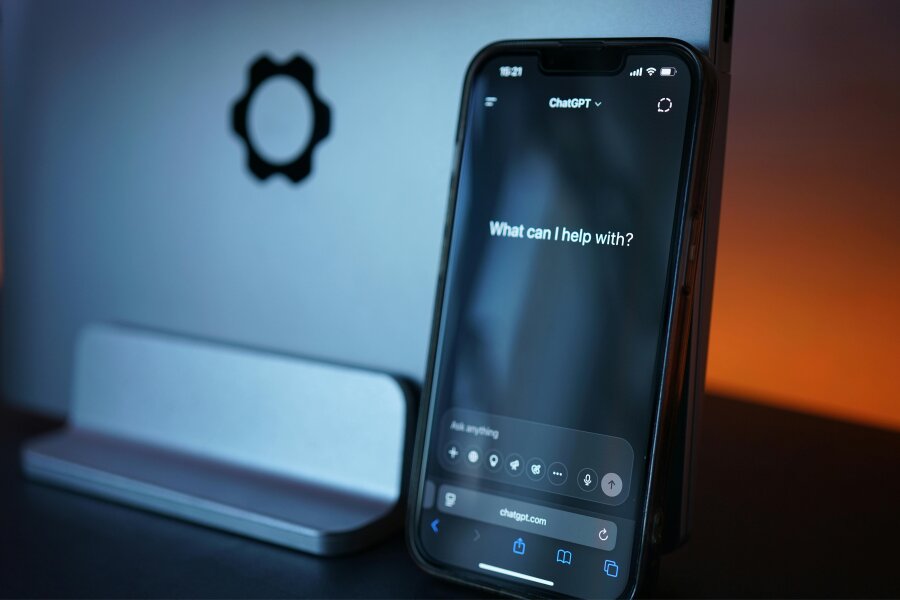Best Property Damage Lawyers in Brabrand
Share your needs with us, get contacted by law firms.
Free. Takes 2 min.
List of the best lawyers in Brabrand, Denmark
We haven't listed any Property Damage lawyers in Brabrand, Denmark yet...
But you can share your requirements with us, and we will help you find the right lawyer for your needs in Brabrand.
Find a Lawyer in BrabrandAbout Property Damage Law in Brabrand, Denmark
This guide explains the main legal considerations for property damage in Brabrand - a district within Aarhus Municipality - and outlines practical steps for people seeking assistance. Property damage covers harm to buildings, fixtures, vehicles, personal belongings and land caused by accidents, weather, third parties, construction work or defective installations. In Denmark, liability for property damage is handled through a mix of general civil-liability principles, specific statutory rules, insurance arrangements and municipal regulation. How a claim is handled depends on the cause of damage, the type of property ownership, and whether the loss is covered by insurance.
The information here is general and intended to help you understand common issues and options. It is not a substitute for tailored legal advice from a qualified lawyer licensed in Denmark.
Why You May Need a Lawyer
Many property damage situations can be resolved directly with insurers, neighbours or contractors. However, a lawyer can be necessary when facts or liability are disputed, the loss is significant, or legal deadlines and procedures must be met. Typical scenarios where people need legal help include:
- Significant storm, flood or fire damage where insurers dispute coverage or valuation.
- Damage caused by neighbours - for example collapsed fences, root damage from trees, or ongoing nuisance - where fault and compensation are contested.
- Damage from construction works - defective workmanship, subsidence or vibration damage - where multiple parties could be liable and complex technical reports are needed.
- Water damage from shared systems in apartment buildings - disputes between owners' associations, tenants and landlords about responsibility and repair costs.
- Criminal damage - vandalism or arson - where you need help coordinating police reports, insurance claims and compensation proceedings.
- Disagreements with builders or suppliers - for example about warranty, repair quality or breach of contract where enforcement or damages are sought.
- Insurance disputes that cannot be resolved through insurer complaint channels and may require litigation or formal complaint to an industry arbitration body.
Local Laws Overview
Key legal features that affect property damage cases in Brabrand include general tort principles, contractual rules, insurance law and local administrative regulations. Important points to be aware of:
- Fault-based liability - In many cases liability for property damage requires a showing that someone was negligent or intentionally caused harm. However, some statutory regimes impose strict liability in particular situations - for example motor vehicle accidents or certain environmental harms.
- Insurance plays a central role - Homeowner, tenant, landlord and building-owner insurance policies commonly determine who bears financial responsibility. Policies may include deductibles, coverage limits and exclusions for specific types of damage such as wear and tear or certain flood risks.
- Building regulations and contractor obligations - Construction and repair work is regulated by the national building code and local planning rules administered by Aarhus Municipality. Contractors have obligations under contract and warranty law to deliver work that complies with building standards.
- Apartment ownership structures - In condominiums and owner-associations, the association´s rules and the Danish legislation governing residential co-ownership determine which party is responsible for common parts, pipes and façades versus individual apartments.
- Municipal responsibilities - Public property, roads, drainage systems and certain flood-prevention measures fall to the municipality. Claims for damage caused by the condition or maintenance of public infrastructure are handled through municipal complaint procedures and may involve different rules than private tort claims.
- Criminal law for intentional damage - Vandalism, arson and other intentional damage should be reported to the police. Criminal proceedings are separate from civil claims for compensation, but a police report is often important evidence for an insurance claim or civil suit.
- Time limits - Legal time limits apply for bringing claims. In many civil cases, claimants must bring legal action within a limited period from when they became aware of the damage. It is important to check deadlines promptly - waiting can jeopardize your right to compensation.
Frequently Asked Questions
What should I do immediately after discovering property damage?
Document the damage with photos and video, move or secure any property at risk to prevent further loss, keep receipts for emergency repairs, and contact your insurer to report the claim. If the damage appears to be caused by a crime, report it to the police. Avoid admitting fault to other parties - stick to factual descriptions when speaking to neighbours, contractors or insurers.
Who pays for emergency repairs to prevent further damage?
Usually the property owner is responsible for arranging immediate mitigation to prevent additional loss. Many insurance policies will reimburse reasonable emergency repair costs if they are reported and documented promptly. Keep receipts and notify your insurer before making non-urgent repairs where possible.
How important is evidence and what should I collect?
Evidence is critical. Take date-stamped photos and videos, keep all invoices and receipts, get contact details for witnesses, keep correspondence with insurers and other parties, and obtain technical reports or repair estimates if the cause or extent of damage is contested. The stronger the evidence, the easier it is to establish liability and value.
What if my neighbour caused the damage - how do I claim?
Start by discussing the issue calmly and document communications. If the neighbour accepts responsibility, get the agreement in writing. If not, report the matter to your insurer and consider obtaining a technical expert report that attributes cause. You can claim compensation from the neighbour directly or through your insurer - insurers often pursue recovery from the third party after paying your claim.
Can the municipality be liable for damage caused by public infrastructure?
Yes, municipal liability can arise if damage results from negligent maintenance of public roads, sewers or other infrastructure. Procedures and standards differ from private claims, and you should notify Aarhus Municipality promptly and preserve evidence. A lawyer can advise on the specific process for claims against a public authority.
When should I involve a lawyer in an insurance dispute?
Consider a lawyer if the insurer denies coverage, offers a settlement that seems too low, delays payment unreasonably, or if liability is disputed and the claim value is significant. A lawyer can review your policy, advise on legal merits, negotiate with the insurer and, if necessary, bring a formal complaint to the insurance complaints board or initiate litigation.
How do building defects and contractor disputes work?
If defective work causes damage, your contract with the contractor, warranty rights and building regulations will determine the remedies. Early steps include notifying the contractor in writing, documenting defects, and getting independent technical reports. If the contractor refuses to remedy defects, a lawyer can pursue contractual claims for repair costs, reduction in price or damages.
What about damage in shared buildings - who pays in a condominium?
Responsibility depends on the ownership structure and the association rules. Common parts are usually the responsibility of the owners' association, while individual owners are responsible for damage inside their units. Review the association´s bylaws and insurance policies, and involve the board if common elements are affected. Legal advice is often helpful when the lines of responsibility are unclear.
Are there special rules for flood and storm damage in Brabrand?
Flood and storm damage can be covered differently depending on the source - surface water versus sewer backup versus coastal flooding - and on specific policy terms. Municipal flood defences and maintenance of drainage systems also influence responsibility. Check your insurance policy for flood-related exclusions or requirements, and contact the municipality for information about local flood risk and mitigation measures.
What are the typical outcomes if a case goes to court?
Outcomes can include full or partial compensation for repair costs, replacement value, diminution in value, or refusal of a claim if liability or coverage is rejected. Courts may also award interest and costs in some cases. Many disputes are settled before trial through negotiation or mediation. A lawyer can assess prospects, estimate likely recoveries and advise on whether litigation is proportionate to the claim size.
Additional Resources
Aarhus Municipality - for issues involving public roads, sewers, permits and municipal responsibilities.
Retten i Aarhus - the local district court for civil litigation in the Aarhus area.
Ankenævnet for Forsikring - the Danish Insurance Complaints Board - for unresolved disputes with insurers.
Forbrugerklagenævnet - the Danish Consumer Complaints Board - for consumer disputes, including with tradespeople and suppliers.
Advokatsamfundet - the Danish Bar and Law Society - for finding a qualified lawyer and advice about costs and professional conduct.
The Danish Insurance Association - for general information about insurance types and consumer rights under policies.
Police - for reporting criminal damage or vandalism and obtaining a police report that is often required by insurers.
Local building authorities and the national building code - for rules and standards that apply to construction and repairs.
Next Steps
Step 1 - Secure and document: Take immediate photos and videos, make temporary repairs if needed to prevent more damage, and keep all receipts and invoices.
Step 2 - Notify relevant parties: Report the incident to your insurer, and if a crime is suspected, file a police report. If the damage involves public infrastructure, notify Aarhus Municipality.
Step 3 - Get professional assessments: Obtain written repair estimates and, if necessary, technical reports from independent experts to establish cause and cost.
Step 4 - Check contracts and policies: Review any insurance policies, contracts with builders or tenancy agreements to understand coverage, deductibles and responsibilities.
Step 5 - Seek legal advice early if needed: If liability is disputed, the insurer denies coverage, the claim value is substantial, or you face complex co-ownership or municipal issues, consult a lawyer experienced in property damage and construction law in Denmark. A lawyer can explain your rights, important deadlines, and likely outcomes.
Step 6 - Consider dispute resolution options: Many insurance disputes can be resolved through insurers' complaint mechanisms or industry arbitration. For unresolved matters, your lawyer can advise whether mediation, complaint boards or court action is the appropriate path.
If you are unsure where to start, contact a lawyer or the Danish Bar and Law Society for a referral to a practitioner experienced in property damage claims in the Aarhus/Brabrand area. Early action helps preserve evidence, protect your rights and improve the chances of a satisfactory outcome.
Lawzana helps you find the best lawyers and law firms in Brabrand through a curated and pre-screened list of qualified legal professionals. Our platform offers rankings and detailed profiles of attorneys and law firms, allowing you to compare based on practice areas, including Property Damage, experience, and client feedback.
Each profile includes a description of the firm's areas of practice, client reviews, team members and partners, year of establishment, spoken languages, office locations, contact information, social media presence, and any published articles or resources. Most firms on our platform speak English and are experienced in both local and international legal matters.
Get a quote from top-rated law firms in Brabrand, Denmark — quickly, securely, and without unnecessary hassle.
Disclaimer:
The information provided on this page is for general informational purposes only and does not constitute legal advice. While we strive to ensure the accuracy and relevance of the content, legal information may change over time, and interpretations of the law can vary. You should always consult with a qualified legal professional for advice specific to your situation.
We disclaim all liability for actions taken or not taken based on the content of this page. If you believe any information is incorrect or outdated, please contact us, and we will review and update it where appropriate.







